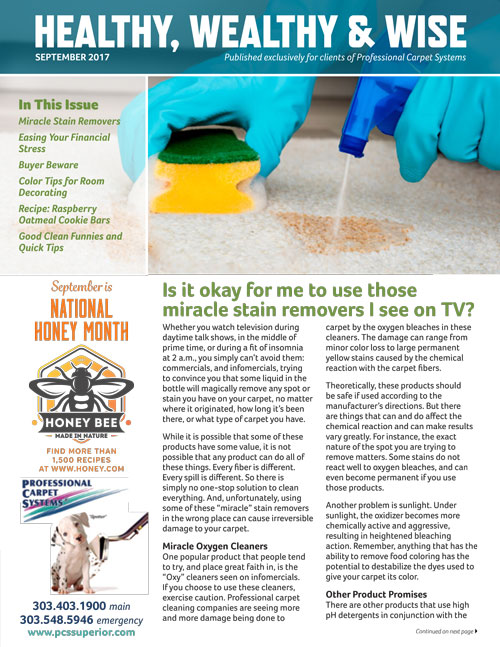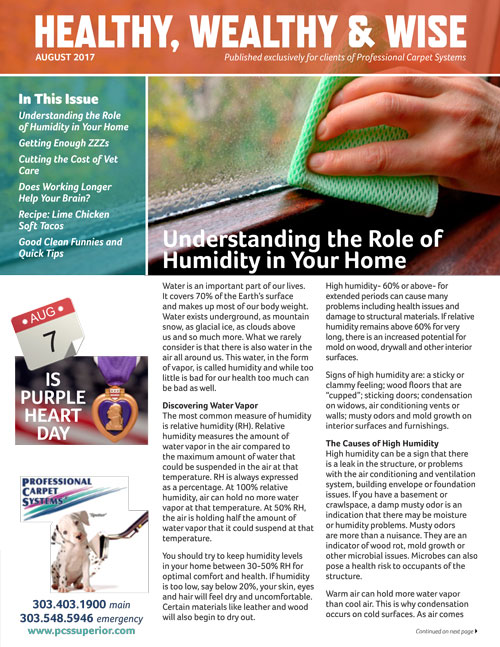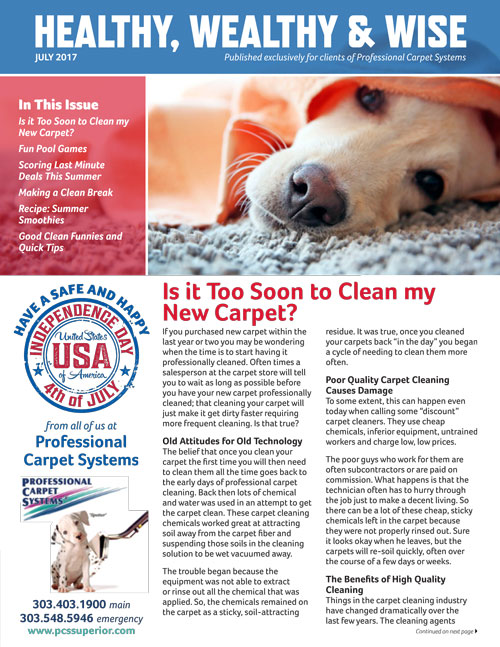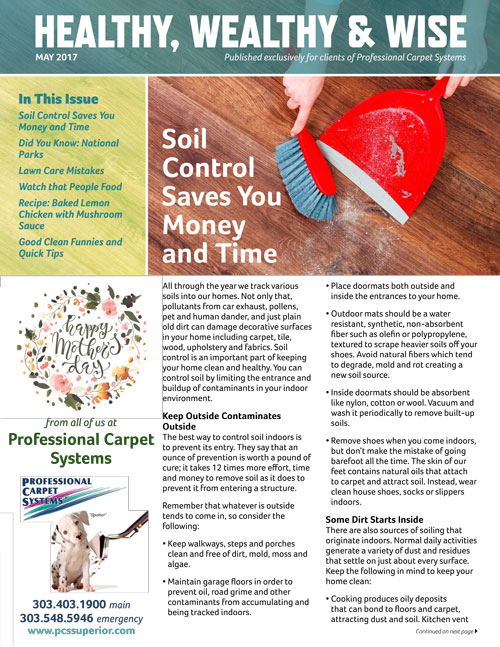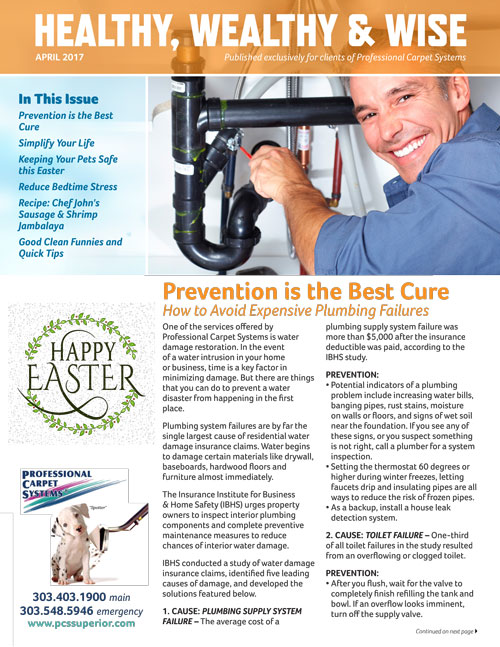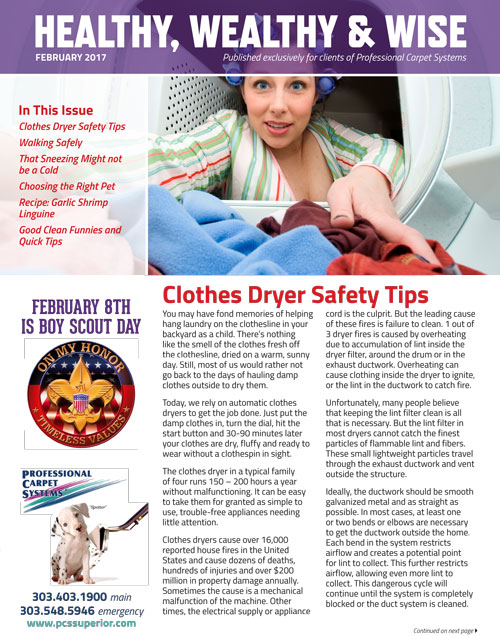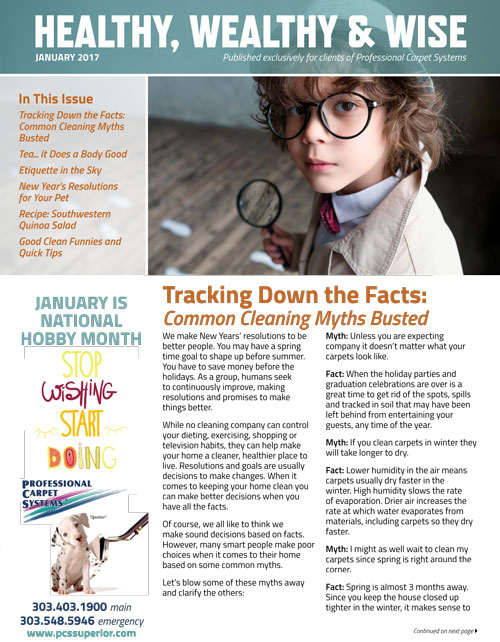Here’s our client newsletter for September 2017.
Click Here to See the Newsletter
Is it Okay for Me to Use Those Miracle Spot Removers I See on TV?
Whether you watch television during daytime talk shows, in the middle of prime time, or during a fit of insomnia at 2 a.m., you simply can’t avoid them: commercials, and infomercials, trying to convince you that some liquid in the bottle will magically remove any spot or stain you have on your carpet, no matter where it originated, how long it’s been there, or what type of carpet you have.
While it is possible that some of these products have some value, it is not possible that any product can do all of these things. Every fiber is different. Every spill is different. So there is simply no one-stop solution to clean everything. And, unfortunately, using some of these “miracle” stain removers in the wrong place can cause irreversible damage to your carpet.
Miracle Oxygen Cleaners
One popular product that people tend to try, and place great faith in, is the “Oxy” cleaners seen on infomercials. If you choose to use these cleaners, exercise caution. Professional carpet cleaning companies are seeing more and more damage being done to
One popular product that people tend to try, and place great faith in, is the “Oxy” cleaners seen on infomercials. If you choose to use these cleaners, exercise caution. Professional carpet cleaning companies are seeing more and more damage being done to carpet by the oxygen bleaches in these cleaners. The damage can range from minor color loss to large permanent yellow stains caused by the chemical reaction with the carpet fibers.
Theoretically, these products should be safe if used according to the manufacturer’s directions. But there are things that can and do affect the chemical reaction and can make results vary greatly. For instance, the exact nature of the spot you are trying to remove matters. Some stains do not react well to oxygen bleaches, and can even become permanent if you use those products. Another problem is sunlight. Under sunlight, the oxidizer becomes more chemically active and aggressive, resulting in heightened bleaching action. Remember, anything that has the ability to remove food coloring has the potential to destabilize the dyes used to give your carpet its color.
Under sunlight, the oxidizer becomes more chemically active and aggressive, resulting in heightened bleaching action. Remember, anything that has the ability to remove food coloring has the potential to destabilize the dyes used to give your carpet its color.
Other Product Promises
There are other products that use high pH detergents in conjunction with the oxygen bleach to help break down greasy spots and spills. While this can be quite effective in removing the offending spots, it can leave behind a residue that destroys the stain resistant properties of your carpet. This is not visible damage, however it is quite real. The result is an area that is “unprotected” and therefore vulnerable to permanent staining the next time something is spilled there. Also, these highly alkaline residues are often quite sticky, attracting soils. So even though the spot goes away, the area keeps getting dirtier and dirtier. So you apply
So you apply more cleaner and leave more residue, in a never-ending, frustrating cycle of futility. If you had the ability to apply, agitate, rinse and thoroughly extract the chemicals, it wouldn’t be so bad. But removing all of the stuff you pour on the carpet can be quite difficult. So what can you do? Your safest bet when you have a difficult stain is to call Professional Carpet Systems before attempting to remove it yourself. We are an experienced carpet cleaning company, and can give you options as to the best way to handle the situation while avoiding any damage to your carpet. We can also give you tips for removing small spots in the future.

